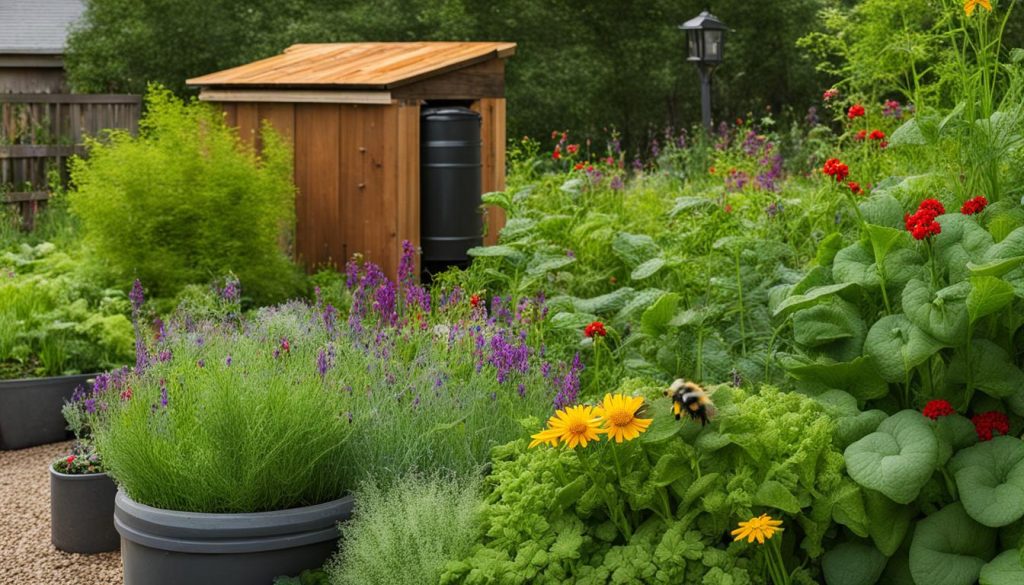Welcome to our guide on sustainable landscaping practices. At a time when climate change is a major concern, it’s important that we take steps to minimize our environmental impact. One area in which we can make a difference is in our gardens. By adopting eco-friendly choices and sustainable landscaping practices, we can enhance the beauty of our outdoor spaces while reducing our carbon footprint.
So what is sustainable landscaping? Essentially, it’s a way of designing, creating, and maintaining a garden that is in harmony with the natural environment. This means using techniques that minimize water usage, promote healthy soil, and support local ecosystems. By using native plants, efficient irrigation systems, and organic gardening techniques, we can create a beautiful and sustainable garden that benefits both us and the planet.
As we explore the many benefits of sustainable landscaping in this guide, we hope you’ll be inspired to make some eco-friendly choices in your own Canadian garden. Let’s get started!
The Benefits of Sustainable Landscaping
When it comes to sustainable landscaping, the benefits go far beyond just having a beautiful garden. By adopting eco-friendly practices, you can help conserve natural resources, reduce your environmental impact, and support local ecosystems. Let’s take a closer look at the benefits of sustainable landscaping.
Conserves water
One of the most significant benefits of sustainable landscaping is its ability to conserve water. By using techniques such as rainwater harvesting, drip irrigation, and xeriscaping, you can significantly reduce the amount of water your garden needs. This not only helps preserve our valuable water resources but also saves you money on your water bills.
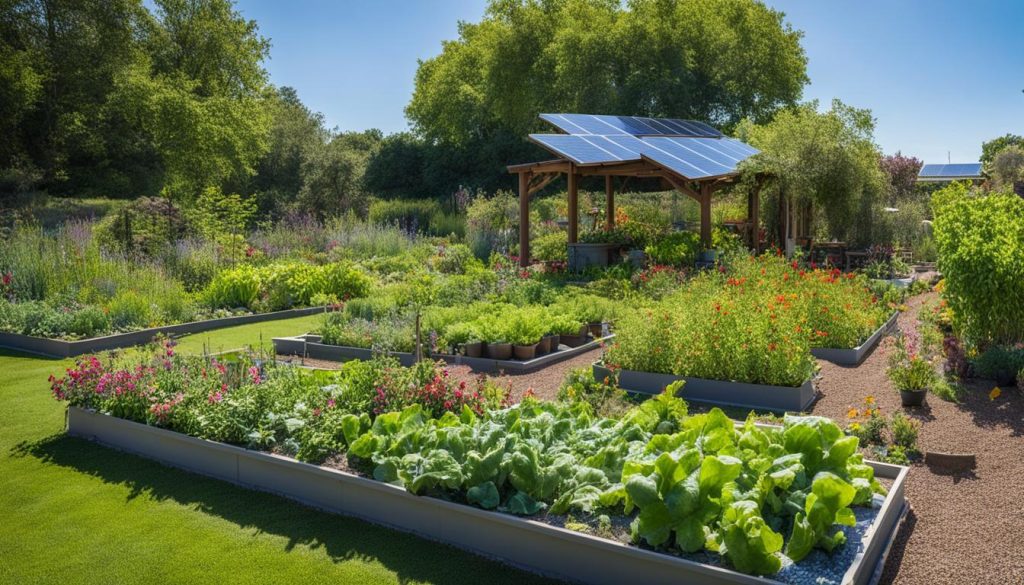
Reduces energy consumption
Sustainable landscaping can also help reduce energy consumption in your home. By strategically planting trees and shrubs, you can provide natural shade and cooling, which can lower your air conditioning needs during the summer months. Additionally, using renewable energy sources such as solar-powered lighting can help reduce your home’s energy consumption even further.
Improves air quality
Did you know that sustainable landscaping practices can also improve the air quality in your community? By planting trees and other vegetation, you can help remove pollutants from the air and produce oxygen. This not only benefits you and your family but also contributes to the overall health of your community.
Supports local ecosystems
Finally, sustainable landscaping practices can help support local ecosystems by providing a habitat for wildlife and promoting biodiversity. By using native plant species and creating wildlife-friendly habitats, you can attract beneficial creatures such as birds, butterflies, and bees to your garden. This not only enhances the beauty of your outdoor space but also contributes to the health and well-being of your local environment.
As you can see, the benefits of sustainable landscaping are numerous and significant. By making eco-friendly choices in your garden, you can reduce your environmental impact, conserve resources, and support local ecosystems. Let’s work together to create a more sustainable future for our communities.
Designing a Sustainable Landscape
When it comes to sustainable landscaping, the design of your garden plays a significant role in achieving your eco-friendly goals. By incorporating specific techniques, you can reduce your environmental impact, conserve resources, and create a beautiful outdoor space. Here are some tips for designing a sustainable landscape.
Choose Native Plants
One of the best ways to minimize your garden’s impact on the environment is by selecting native plants. These plants are adapted to the local climate and soil conditions and require less water, fertilizer, and pesticides. Native plants also provide food and habitat for local wildlife, making them an essential component of a sustainable landscape. You can consult with local nurseries or gardening organizations to determine which plants are native to your region.
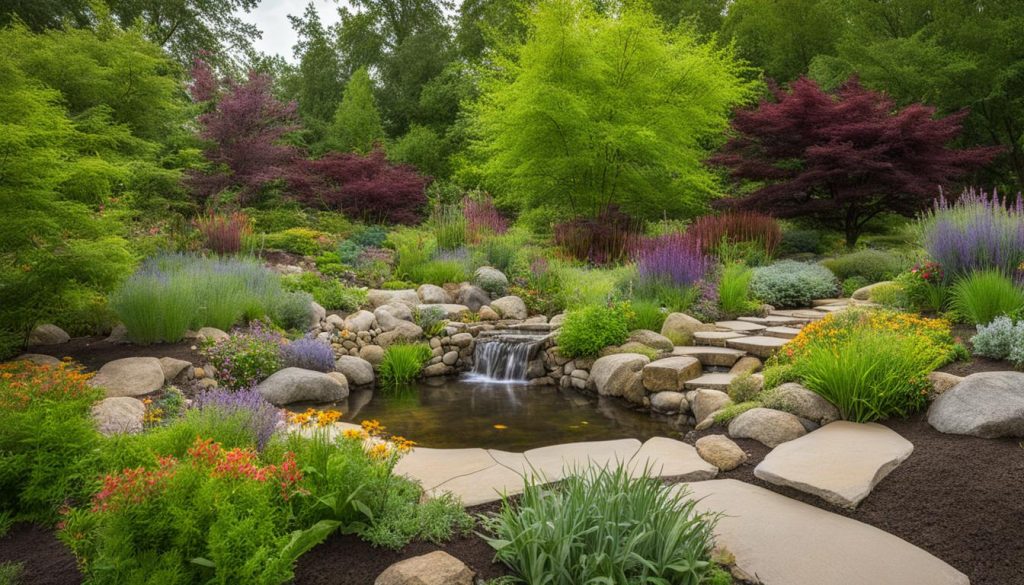
Group Plants According to Water Needs
Grouping plants according to their water needs is another effective technique for designing a sustainable landscape. By grouping plants with similar water requirements, you can minimize water wastage and optimize irrigation efficiency. Consider installing a drip irrigation system that can deliver water directly to the roots of your plants, reducing the risk of evaporation and runoff.
Opt for Permeable Surfaces
Permeable surfaces allow water to penetrate the soil rather than running off into storm drains. This reduces the risk of flooding, erosion, and contamination of local water sources. Examples of permeable surfaces include gravel, permeable pavers, and porous concrete. Installing permeable surfaces in your garden can help maximize water conservation and minimize environmental impact.
Minimize Lawn Areas
Lawn areas can be challenging to maintain and require significant resources such as water, fertilizer, and pesticides. By minimizing the size of your lawn areas, you can reduce your environmental impact and create more space for other sustainable landscaping features. Consider replacing some of your lawn areas with native plants, vegetable gardens, or outdoor living spaces.
Consider Composting
Composting is a natural process that transforms organic waste into nutrient-rich soil. By composting your food scraps, yard waste, and other organic materials, you can reduce your waste output and create a source of free, sustainable fertilizer for your garden. There are several composting methods available, including worm composting and outdoor composting bins.
By incorporating these sustainable landscaping techniques into your garden design, you can reduce your environmental impact and create a space that is both beautiful and functional. Sustainable landscaping is not only good for the environment but also for your wallet, as it can help reduce your water and energy bills over time.
Water Conservation Strategies
Conserving water is an essential aspect of sustainable landscaping. By reducing water usage, we can save money, preserve natural resources, and minimize water waste. In this section, we will explore effective water conservation strategies that can help you create a sustainable garden.
Rainwater Harvesting
Rainwater harvesting is the process of collecting and storing rainwater for future use. By installing a rain barrel or cistern, you can capture rainwater from your roof and use it to irrigate your garden. This technique can help reduce your reliance on municipal water sources and also promotes sustainable water usage.
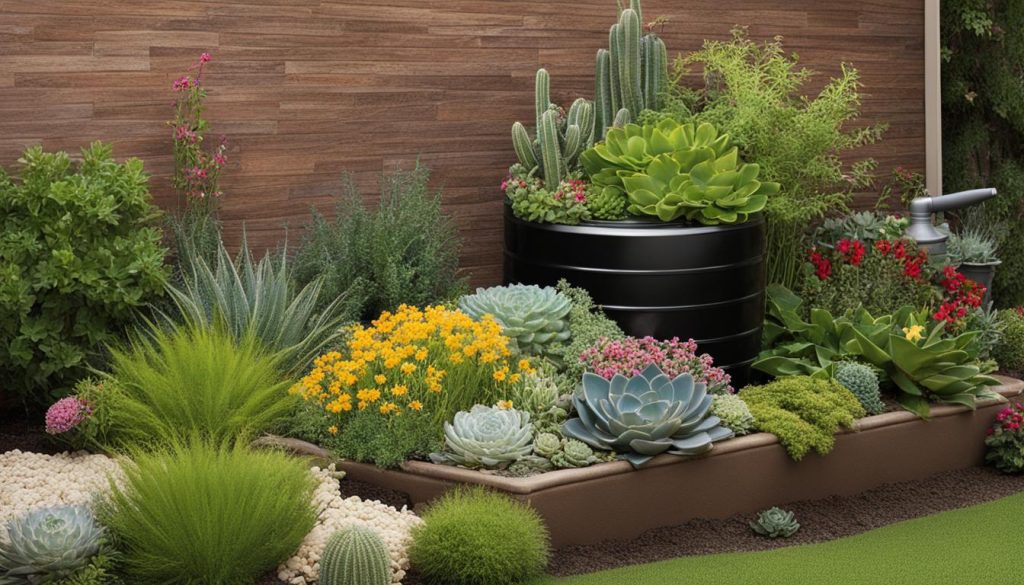
Smart Irrigation Technology
Smart irrigation technology refers to the use of automated systems that adjust watering schedules and amounts based on weather conditions and plant needs. This technology can help prevent overwatering and ensure that your plants receive the right amount of water at the right time. Some smart irrigation systems can also detect and repair leaks, further reducing water waste.
Xeriscaping Techniques
Xeriscaping is a landscaping technique that uses drought-tolerant plants and efficient irrigation methods to reduce water usage. By choosing native plants that are adapted to your region’s climate and soil conditions, you can minimize water needs and create a beautiful, sustainable garden. Some xeriscaping techniques include using mulch to retain moisture, grouping plants with similar water needs, and minimizing turf areas.
By implementing these water conservation strategies in your garden, you can reduce your environmental impact and create a sustainable outdoor space that conserves natural resources.
Organic Gardening Practices
One of the key components of sustainable landscaping is organic gardening. By using natural methods to nourish and protect your plants, you can help support a healthy ecosystem in your garden. Here are some tips for incorporating organic gardening practices into your landscape design:
Use Natural Fertilizers
Instead of synthetic fertilizers that can harm the environment and reduce soil health over time, opt for natural fertilizers such as compost, manure, or bone meal. These options provide essential nutrients to your plants without the harmful side effects.
Practice Integrated Pest Management
Integrated pest management involves using a combination of techniques to prevent and control pests and diseases without relying on harmful chemicals. Some effective methods include crop rotation, companion planting, and releasing beneficial insects such as ladybugs and praying mantises.
Create Healthy Soil
The health of your plants depends on the quality of the soil they grow in. To promote healthy soil, use organic matter such as compost and mulch to improve soil structure and retain moisture. Avoid tilling the soil excessively, as this can disrupt the natural balance of microorganisms that live in the soil.
The Benefits of Organic Gardening
Organic gardening practices not only benefit the environment but also contribute to healthier plants and a more nutritious harvest. By avoiding harmful chemicals and relying on natural methods, you can create a sustainable landscape that is safe for your family and your local ecosystem.
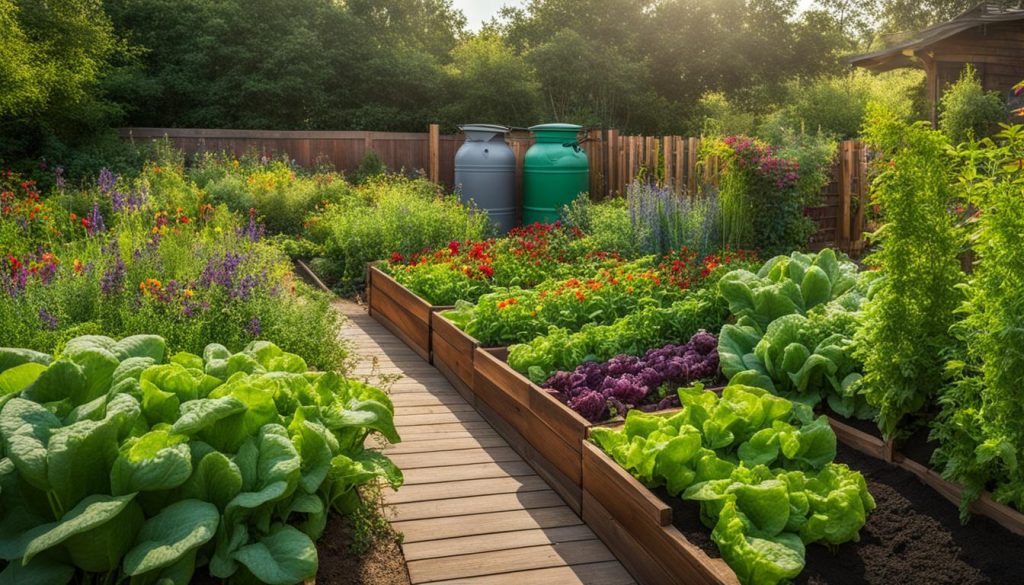
- Use natural fertilizers such as compost, manure, or bone meal
- Practice integrated pest management by using a combination of techniques to prevent and control pests and diseases without relying on harmful chemicals
- Create healthy soil by using organic matter such as compost and mulch to improve soil structure and retain moisture, and avoid excessive tilling which can disrupt soil microorganisms
Creating Wildlife-Friendly Habitats
Attracting and supporting local wildlife in your garden not only adds beauty and diversity but also plays a crucial role in maintaining a healthy ecosystem. To create a wildlife-friendly garden, consider the following tips:
Choose Native Plants
Native plants are essential for attracting and supporting local wildlife, as they provide a natural food source and habitat. When selecting plants, choose ones that are native to your area and that are adapted to your garden’s soil and climate. Native plants can also help control soil erosion and improve water quality.
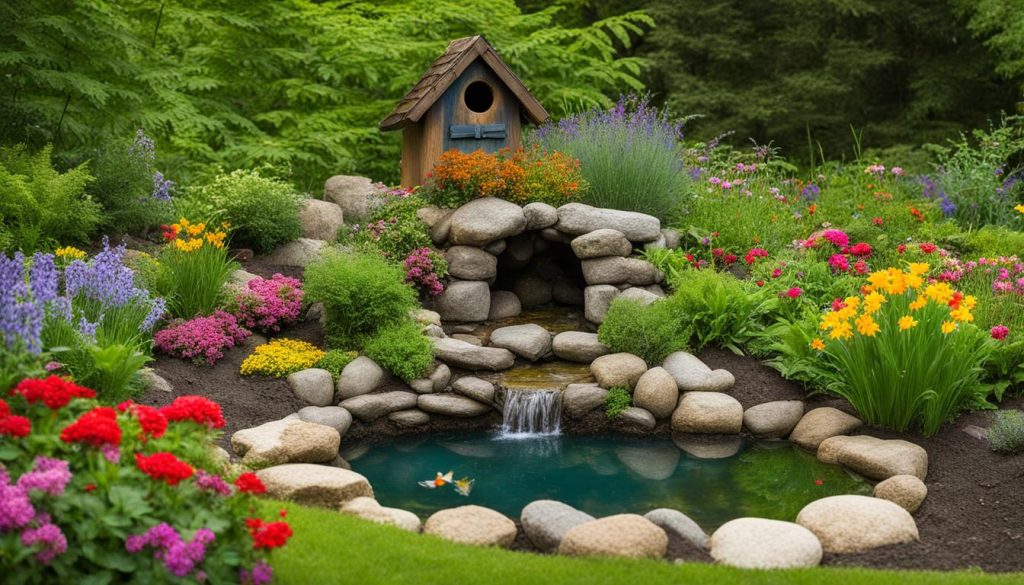
Provide Food and Water Sources
- Install bird feeders to attract birds to your garden
- Plant flowers that produce nectar for butterflies and bees
- Add a bird bath or water feature to provide a drinking source for wildlife
Create Shelter and Nesting Sites
- Plant shrubs and trees to create a natural shelter for wildlife
- Add nesting boxes for birds and bats
- Include rock piles and log piles to create hiding places for small animals
By implementing these wildlife-friendly practices, you can create a sustainable garden that not only benefits your local ecosystem but also provides a beautiful outdoor space for you to enjoy.
Maintaining a Sustainable Landscape
At this point, you’ve put in a lot of hard work designing and implementing sustainable practices in your garden. However, it’s important not to let your efforts go to waste by neglecting the maintenance of your sustainable landscape. Regular maintenance will ensure the long-term health and sustainability of your garden, while also keeping it looking beautiful.
Proper Pruning Techniques
Regular pruning is crucial for the growth and maintenance of your plants. However, it’s important to use proper pruning techniques to avoid damaging your plants and creating unnecessary waste. When pruning, make sure to use clean and sharp tools to avoid tearing the plant tissue. Additionally, only prune what is necessary to maintain the plant’s health and shape.
Responsible Use of Fertilizers and Pesticides
While fertilizers and pesticides can be useful in maintaining the health of your garden, it’s important to use them responsibly. Overuse of these chemicals can lead to soil and water pollution, harming both the environment and the local ecosystem. Always follow the instructions on the label when applying fertilizers and pesticides, and consider using natural alternatives when possible.
Ongoing Monitoring
Regular monitoring of your garden’s health is essential for catching problems early and preventing long-term damage. Keep an eye out for signs of pests or disease, soil erosion, and any issues with irrigation or water usage. Addressing these issues promptly can prevent them from becoming bigger problems down the line.
By following these maintenance practices, you can ensure that your sustainable landscape remains healthy, beautiful, and eco-friendly for years to come.
Landscaping Vaughan is here for all your landscaping needs! Reach out for design, maintenance, or hardscaping solutions. Let’s transform your outdoor space into a stunning masterpiece! Contact us today!

